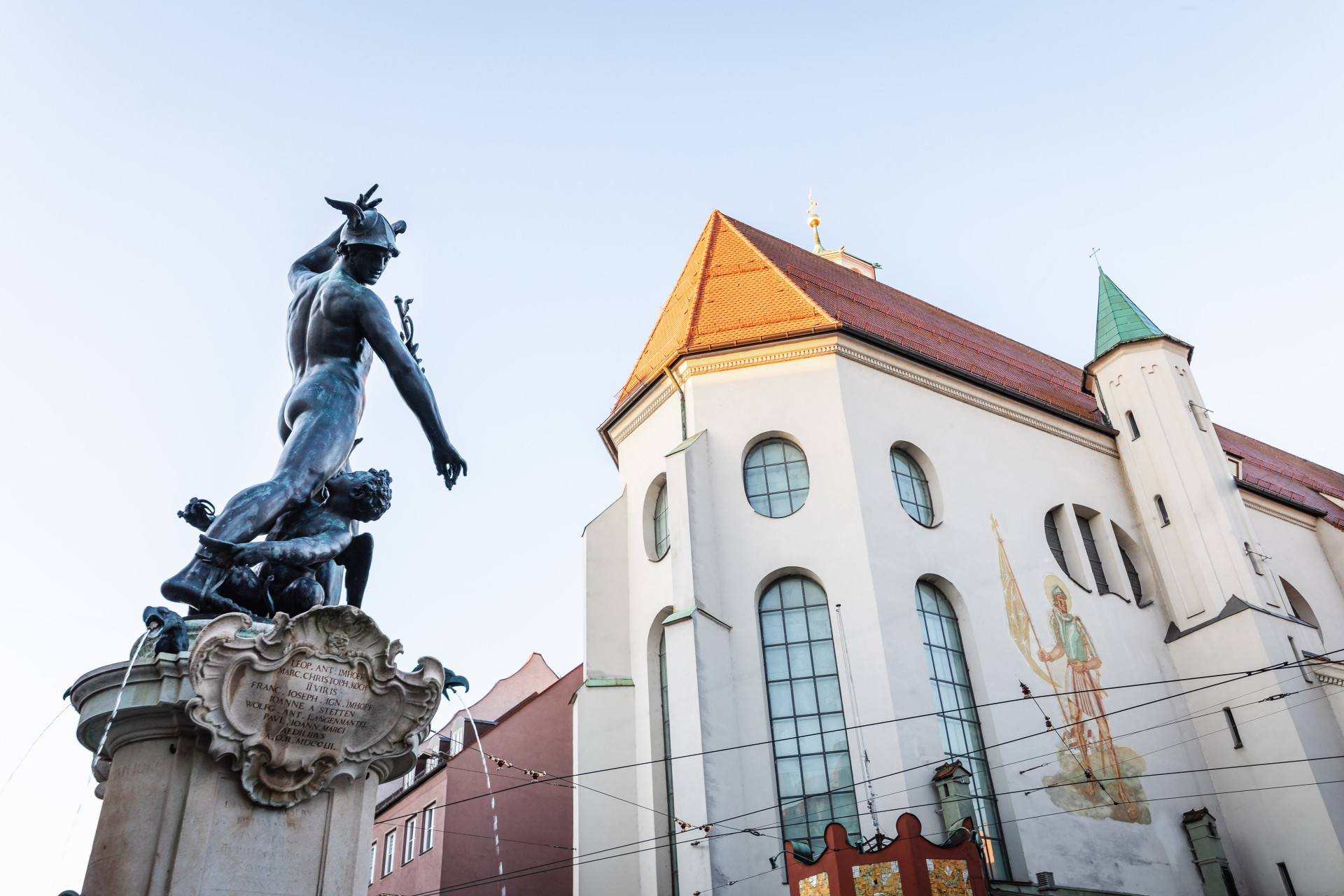
8
Mercury Fountain
The fountain was designed around 1599 by Adriaen de Vries, a sculptor of European renown. The bronze group on the fountain pillar shows Mercury and at his feet Cupid, who is taking off the sandals of the god of trade. This symbolises the desire and certainty that Mercury will remain in Augsburg and keep trade flourishing and thus the city prospering.
Building history and description
- Monumental fountain in the style of late Mannerism, marble pillars, bronze figures, orientation to Giambologna, originally public drinking and running well, since the establishment of the well grid (about 1713) showpiece
- Augsburg, city center, Moritzplatz
- Origin 1596-1599, pillar renewed in 1752, to commemorate it two Rocaille cartridges at the fountain pier, renovation of the bronzes 1996-1997, original bronzes in the Maximilian Museum since 2001
- Sculptor Adriaen de Vries, foundry Wolfgang Neidhardt
- 2.69 m high, all-seeing bronze figurines of the Mercury and the Armor
- at the fountain pier two Medusen heads, dog heads and lion masks (supplement) and four eagle heads as a gargoyle
- all-seeing sculpture, dynamic movement, upward posture, contrapost, figura serpentinata (winding "snake line" of the figure)
- Inscriptions on the north side (caretaker Johann Welser and Octavian Sekundus Fugger ordered 1596 well construction), south side (caretaker Oktavian Sekundus Fugger and Quirin Rehlinger accepted well 1599) as well as subsequently on all four sides (renovations)
Use and purpose
- Roman god of commerce reminiscent of ancient heritage of the city and tradition as a trading metropolis, placement on Moritzplatz (central marketplace of the imperial city of Augsburg) at Weberhaus (important guild)
- sprezzatura (nonchalance and lightness, which characterizes an ideal courtier), Mercury as a typical representation in lordly contexts (for example, in princely courtyards), thus courtly language of form, choice of subject as a public monument of a imperial city singular
- Mercury as a messenger of the gods with heraldic staff also as a symbol of civilization and peace, Christian virtue and economic wealth achieved through harmony
- Amor (little boy at Mercury's feet) ties sandals to keep God's prosperous blessing in the city
Authenticity and unique features
- Fountain bronzes in their best condition, original bronzes due to environmental threats and vandalism today museum exhibits (but this does not contradict the UNESCO requirement of authenticity)
- Regular care by the city of Augsburg
- winter protection cover
- Manneristic artwork of European renown, Triassic splendor fountain in this form unique in the world
- Glorification of the water through very expensive material Bronze illustrates the significance of the water system for Augsburg


